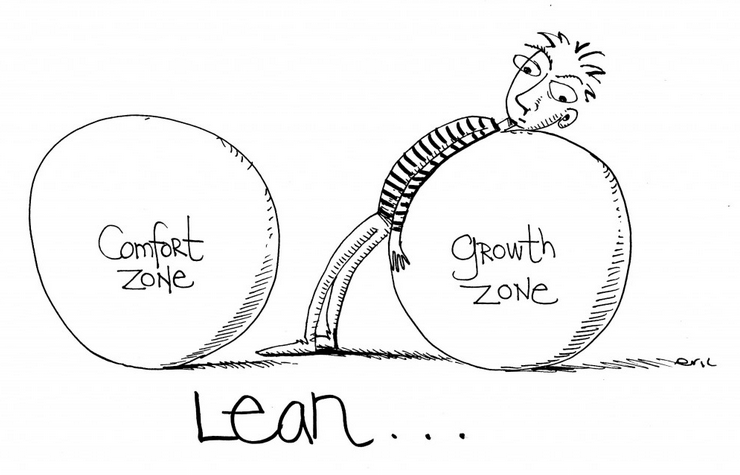Blog
10 Jun Funding Alert! Our Town Creative Placemaking Grants
National Endowment for the Arts Is your community looking for project-based funding to support activities that further the arts? The National Endowment for the Arts (NEA) recently opened applications for its Our Town grant program. Our Town is NEA’s “creative placemaking” grant program, through which arts, cultural, and design activities strengthen and advance local economic, physical, and/or social outcomes. Ultimately, Our Town projects pave the way for systems-level changes that promote the sustainable integration of arts, culture, and design into the fabric of community life.06 Jun Looking to Grow as a Grant Professional? Lean into your Discomfort by Julie Assel, GPC
Posted at 20:39h
in Competency Eight, Competency Seven, Julie Assel, GPC, Professional Development, Professionalism, Relationships
I am a grant professional for whom the written word is a more comfortable form of communication than face-to-face communication. Once I understood the concepts and intent of grant proposal writing, I fell in love with it. The majority of my time is spent alone in my office writing or in one-on-one conversations with program, financial, and executive leadership staff. Given that my learning style is also visual text, reading RFPs, gathering the information needed, and conducting the research is all easy for me to understand.
Recently though, I have needed to be involved in meetings with program officers. These are not my favorite activity. Oh, I love hearing all the things funders have to say about their organization that help me better understand their mission. I also love to hear all the things about the program that my organizations say to the funder that I have not heard before in quite the same way. (Haven’t we all been here?) If my only task was to listen, these meetings would be easy, but these were conversations in which I was the lead for a significant portion of the conversation.
04 Jun Funding Alert! Choice Neighborhoods Planning Grants
Department of Housing and Urban Development Attention Public Housing Authorities (PHAs), local or tribal governments, and nonprofits! The Department of Housing and Urban Development (HUD) is now accepting proposals to its Choice Neighborhoods Planning Grants program. This program supports the local development of strategies to address severely distressed public housing through a collaborative and comprehensive approach to neighborhood transformation. Choice Neighborhoods programs result in the development and implementation of a “Transformation Plan” that guides the revitalization of public and/or HUD-assisted housing units, transformation of the surrounding neighborhoods, and realization of positive outcomes for local families. Proposals to this program are due July 13, 2021.27 May Funding Alert! Telehealth Learning Program Cooperative Agreements
Department of Health and Human Services – Health Resources and Services Administration Does your organization use telehealth technologies to serve rural, underserved populations? The Health Resources and Services Administration (HRSA) recently opened its Telehealth Technology-Enabled Learning Program (TTELP), which aims to facilitate evidence-based training, professional education, and support of primary care providers (PCPs) who serve rural, frontier, and underserved areas. This program emphasizes collaborative relationships between specialists at academic medical centers and PCPs to implement learning community models and provide training in best-practice specialty care to PCPs and their teams. Proposals are due June 25, 2021.24 May Practical Application of Motivational Interviewing by Julie Alsup, GPC
Posted at 19:17h
in Competency One, Competency Two, Julie Alsup, GPC, Organizational Development, Research
I recently participated in my colleague Tracey Diefenbach’s training on Motivational Interviewing (MI). I was inspired! Between having a degree in psychology and gaining these new skills and techniques, I was convinced I can now motivate people to do what I need them to do!
21 May Funding Alert! Grants for Improving Undergraduate STEM Education
National Science Foundation (NSF) Attention educators, researchers, institutions of higher education, and associated organizations! NSF is now accepting proposals to its Improving Undergraduate STEM Education: Education & Human Resources (IUSE: EHR) Program. As part of NSF’s broader IUSE education initiative, this program promotes better understanding of novel, creative, and transformative approaches to fully engaging all undergraduate students in STEM education. IUSE: EHR accomplishes this through engaged student learning (development, testing, and the use of innovative teaching/curricular practices) and institutional and community transformation (implementing and sustaining effective STEM education). Proposals to this program are due July 21, 2021.13 May Funding Alert! Racial Equity in STEM Education Grants
National Science Foundation (NSF) Does your organization work to address systemic racism in the science, technology, engineering, and mathematics (STEM) fields? NSF is now accepting proposals to its Racial Equity in STEM program. This program is designed to advance racial equity in STEM education and workforce development through fundamental and applied research and practice. NSF encourages prospective applicants to send a one-page concept paper in advance of the full proposal. The full proposal deadline is July 13, 2021.10 May Growing Partnerships By AGS Staff
Posted at 16:35h
in AGS Staff, Competency Three, Competency Two, Funder Relations, Organizational Development, Program Design, Relationships
As grant professionals, we all know that one way to boost our proposals is to include collaboration. Funders like to see partnerships for a number of reasons. But too often, the partnerships we include might not be very substantive. Maybe we worked together on one event or they refer a few clients to our organization. But funders emphasize collaboration for good reason and it might be time to truly give those partnerships a chance to GROW!
So, how do you go about helping your partnerships blossom? Begin by taking stock of all of your current partners, big or small. Partners could include other nonprofit organizations, funders, businesses, or individuals. Assess the ways in which you currently partner and begin thinking outside of the box to explore other ways in which both parties could benefit from expanded collaboration. One way the levels of partnership are often framed is through the 3C Model, which came from the for-profit sector. Its tiers include cooperation, coordination, and collaboration (moving from simple to complex). Here are a few ideas of ways to expand from surface-level partnership to meaningful relationships that benefit everyone involved:










